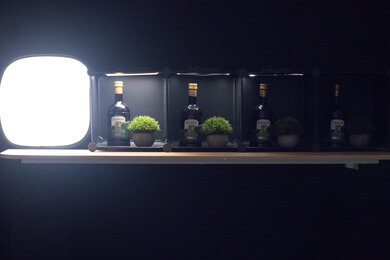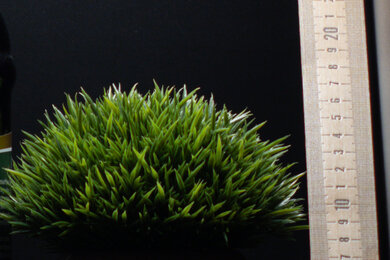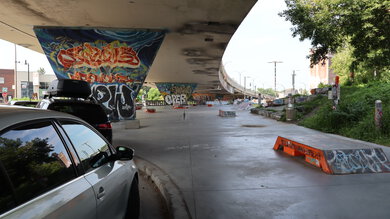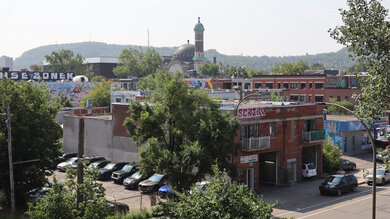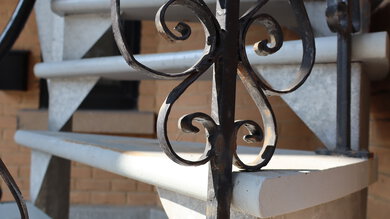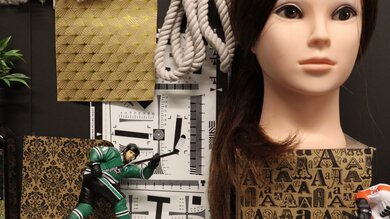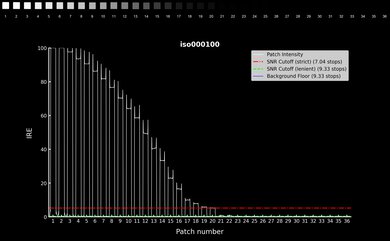The Canon EOS R100 is a budget-friendly mirrorless camera. It's the cheapest model within Canon's R ecosystem, sitting below the Canon EOS R50 and effectively replacing entry-level DSLR models like the Canon EOS Rebel T7 / EOS 2000D and Canon EOS Rebel T100 / EOS 4000D. It's aimed squarely at novice photographers who are looking for their first dedicated interchangeable lens camera. As such, it marries a compact, user-friendly body to the 24.1MP APS-C sensor from the Canon EOS Rebel SL3 DSLR and bundles in plenty of automatic shooting modes. However, its primitive 4k recording capabilities and lack of a touch-sensitive screen are significant oversights for a camera marketed to smartphone users.
Our Verdict
The Canon R100 is a very good camera for travel photography. It's lightweight and fairly compact, making it very easy to carry around. Its user-friendly interface and a wide variety of automatic shooting modes also make it easy for novice users to come to grips with. The lack of touch controls might put off smartphone shooters, while more experienced photographers would prefer more physical exposure controls. Its display gets fairly bright, but its fixed position and glossy surface can make it hard to see under direct sunlight. Since you can't recharge the camera's battery without the use of its wall-mount charger, it's best to be prepared with multiple batteries for long days on the go.
- Good image quality.
- Intuitive controls and easily-accessible auto shooting modes.
- Lightweight, compact design.
- Fixed-position screen isn't touch-sensitive.
- Can't be charged while in use.
The Canon R100 is a good option for landscape photography when used within its limits. Image quality is good overall, with a relatively wide dynamic range, decent noise handling, and very solid detail retention. Its compact size and lightweight construction also make it very easy to carry around on long trips in the wilderness, but the lack of weather sealing means you'll need to be careful when shooting in tough conditions. Its lack of an articulating screen can make it a challenge to shoot from below waist level, too. It also doesn't support USB charging, so leave with multiple fully charged battery packs if you plan on heading into the wilderness.
- Good image quality.
- Intuitive controls and easily-accessible auto shooting modes.
- Lightweight, compact design.
- Fixed-position screen isn't touch-sensitive.
- Can't be charged while in use.
The Canon R100 is a decent camera for sports and wildlife photography, with a few caveats. Its max continuous shooting speed of just 6 fps and tiny photo buffer means you might miss some brief moments. It also can only shoot at 3 fps with continuous autofocus enabled. You also can't manually select what you want the autofocus to lock onto, and the system can occasionally lose track of subjects. Thankfully, image quality is good overall, and it even features a dedicated 'Sports' auto mode suitable for beginner shooters, though the shutter speed isn't adjustable in this configuration.
- Good image quality.
- Intuitive controls and easily-accessible auto shooting modes.
- Can't be charged while in use.
- Slow max shooting speed and small buffer.
The Canon R100 is a sub-par option for vlogging, but this isn't its intended use. Its screen is fixed in position, so you can't see what's being recorded when the camera is pointed at you. Its 4k recording capabilities are also dismal, with a significant rolling shutter, a max frame rate of 24 fps, and a significant crop; using its digital stabilization system incurs an even greater crop that renders 4k video all but unusable. It's also saddled with an unreliable contrast-detect autofocus system when shooting in 4k. It fares better in FHD video, where it can use its far superior Dual-Pixel autofocus and record at up to 60 fps. Unfortunately, USB charging is not supported in any capacity; if you want to recharge the battery, you'll need to use the external wall-mount charger instead.
- Lightweight, compact design.
- Fixed-position screen isn't touch-sensitive.
- Significant rolling shutter.
- Poor 4k recording capabilities.
- Video quality is very noisy in low-light.
- Can't be charged while in use.
The Canon R100 is a satisfactory option for shooting in a studio as long as you know its limitations and stick to shooting in 1080p. While the actual 4k video quality is decent, it can only record in this resolution at 24 fps with a significant 1.54x crop. Shooting in 4k means you'll also have to rely on a basic contrast-detect autofocus system, which easily loses track of moving subjects and is far less reliable than the Dual-Pixel system used to shoot FHD video. You can only recharge its battery using the external charger, and the camera has a short max recording time limit of 30 minutes. There's no Log recording either, though that isn't surprising given that this is an entry-level camera.
- User-friendly menu system.
- Significant rolling shutter.
- Poor 4k recording capabilities.
- Can't be charged while in use.
The Canon R100 isn't designed for POV-style action video and is a poor option for shooting from the sidelines. Video quality is only passable when shooting in well-lit environments, and its frame rate options are capped at 60 fps in 1080p. It's not worth considering for recording sporting events in 4k, as you can only shoot at 24 fps with a significant crop in this resolution. There is a dedicated high-speed recording mode for slow-motion video, but only in HD (1280 x 720).
- Lightweight, compact design.
- Significant rolling shutter.
- Poor 4k recording capabilities.
- Video quality is very noisy in low-light.
- Can't be charged while in use.
The Canon R100 has decent RAW photo quality. Its dynamic range is good, so it can capture a fair amount of shadow and highlight detail in high-contrast scenes. Images also look detailed. However, its low-light noise handling is just okay.
- Good dynamic range.
- Adequate noise handling.
Performance Usages
Changelog
- Updated Feb 24, 2025: We've converted this review to Test Bench 0.13. We've added new tests for Video Dynamic Range and Luminosity Patch Detection. You can learn more about these updates in the changelog.
- Updated Jan 29, 2024: Added text to the 'Raw Photo Performance' verdict box.
- Updated Jan 29, 2024: Converted to Test Bench 0.12.1.
- Updated Aug 23, 2023: Review published.
Check Price
Differences Between Sizes And Variants
The Canon EOS R100 is available in either 'Black' or 'White' colorways. We tested the 'Black' model, and you can see the label for our test unit here. You can buy the R100 camera body on its own or in a bundle with the RF-S 18-45mm f/4.5-6.3 IS STM kit lens.
Let us know if you encounter any other variants, and we'll update our review.
Popular Camera Comparisons
The Canon EOS R100 is about as basic as mirrorless cameras get. It's easy to use and offers good overall image quality. Still, it's far less well-rounded than the only slightly more expensive Canon EOS R50, which offers an articulating touch-sensitive screen along with much more robust video capabilities with the ability to record uncropped 4k at up to 30 fps, support for HDR PQ, and a longer 60-minute recording time limit.
If you're looking for an alternative, check out our recommendations for the best cameras for beginners, the best cameras under $1,000, and the best travel cameras.
The Canon EOS R50 is a better overall camera than the Canon EOS R100. The two cameras are more or less identical in terms of overall dimensions, but the R50 has a touch-sensitive fully articulated display and a much faster max shooting speed (albeit with a similarly small photo buffer). It also uses the newer version of Canon's Dual Pixel autofocus system, which does a better job of tracking subjects when compared to the R100. The R50 is also a much better choice for video work, as it can shoot uncropped 4k video at up to 30 fps and record 10-bit footage in its HDR PQ mode to preserve a wider range of detail on HDR displays.
The Canon EOS Rebel T7/2000D and the Canon EOS R100 are both beginner-oriented cameras with different designs, but ultimately, the newer R100 offers a much wider breadth of capability. The mirrorless R100 is smaller and lighter, feels better built, has a brighter and sharper display, and has a more intuitive menu system. It also has a much more effective autofocus system, plenty of automatic scene shooting modes, and can record 4k video, albeit with a severe crop and a max frame rate of 24 fps. While the Rebel T7 has Canon's EF/EF-S lens mount, which currently offers a much wider array of budget-friendly lenses, you can always use them with an R100 via an EF-EOS R lens mount adapter, although that comes at an additional cost and some added bulk.
The Canon EOS R10 is better than the Canon EOS R100, but that's a given since it's aimed at more advanced users and sits at a higher price point. The R10 outperforms the R100 in almost every way, with better autofocus, faster burst shooting, better build quality, and more features. That said, the R100 has a simpler, more beginner-friendly interface and a more portable design that still gives it some value for those looking to get a starter camera on a tight budget.
The Canon EOS M50 and the Canon EOS R100 each have their own advantages. The R100 feels better built, has a higher-capacity battery, and offers eye tracking in 4k video, though both cameras are saddled with a max frame rate of 24 fps and a severe crop when shooting in this resolution. Meanwhile, the M50 is a little more compact, features a fully articulated touch-sensitive display, and has a faster max shooting speed. Unfortunately, it's worth noting that Canon's M mount is discontinued, and the manufacturer won't be developing any new lens designs for this system.
Test Results

The Canon R100 is very portable. It's almost identical in size, shape, and weight to the pricier Canon EOS R50, which makes it one of the smaller interchangeable-lens APS-C cameras we've tested. While it's a tad too big to fit in a pants pocket, you could easily slip it into a small bag or hang it from a sling for hours with minimal fatigue.
Build quality is good. It's similar in feel to the Canon EOS R50, with a body made mostly from hard plastic. It's got a textured rubber grip that provides a secure hold on the camera, and all its controls, from the shutter button to the command dial, offer a good amount of physical feedback. However, the built-in flash feels cheap, and you must pop it up manually when necessary. Unlike the R50, its screen is built into the body.
Unlike the Canon EOS R50, the Canon R100 doesn't have the new multi-function hot shoe also found on pricier models in the company's lineup, allowing for added functionality like data and power transfer to accessories like flashes or microphones. Instead, the R100 has a traditionally four-pin shoe that's directly compatible with accessories like separately-powered EX-series flashes.
It's worth noting that this camera uses Canon's RF lens mount and that there are only a small handful of dedicated RF-S APS-C lenses with no third-party options currently available. Thankfully, the camera is fully compatible with full-frame RF lenses, too. Do note that if you choose to move onto a full-frame RF-mount Canon body later on, using it with an RF-S APS-C lens will block a portion of the larger sensor, resulting in a crop to your image.
The Canon R100 has decent ergonomics. It's very lightweight and has a textured hand and thumb grip, helping you keep a secure hold on the camera. Its small size also makes it easy to reach all of the controls with your thumb, even if you have fairly small hands, though it's likely to feel cramped if your hands are large, especially when using larger lenses. If you aren't careful when grabbing it, it's easy to accidentally press the directional pad with your palm. With just a single control dial and no touch compatibility, it's also harder to quickly adjust the aperture and shutter speed if you prefer shooting in manual mode.
The electronic viewfinder (EVF) has a 2.36 million dot resolution, which is typical and gives you a fairly sharp image. Its somewhat low magnification makes it feel like your view of the scene is far away. The eyecup is fairly stiff, but thankfully, the EVF protrudes pretty far from the body, giving you more space to comfortably hold the camera to your eye.
The screen is fixed, making it harder to take photos from waist level or shoot from unusual angles. While it does get fairly bright, it's highly reflective, which makes it hard to see what's being displayed when shooting outdoors. It's also noticeably less sharp than the Canon EOS R50's display and isn't touch-sensitive, so you can't select the focus point, navigate the menu, or use the touch shutter.
The menu system is easy to use. Its tab-based layout is similar to many other Canon menu systems but emphasizes explaining features to novices; you can use the built-in guide mode to see detailed explanations of more complicated features. You can also view the full user manual on your smartphone through a QR code that you can display from the menu. Unfortunately, the menu system's streamlined interface can make accessing slightly more advanced features harder. For instance, you'll need to navigate to a separate 'Custom Functions (C.Fn)' sub-menu to enable the extended ISO mode. Key beginner aids like the depth of field preview or electronic level are off by default. You'll need to delve pretty deep into the menu to turn them on, which could be a hassle if you're new to using dedicated cameras to begin with.
If you want to transfer photos to your phone easily, the Canon Camera Connect app connects the camera to your phone via Bluetooth or Wi-Fi; you can see a sample of the interface here. You can transfer files or control the camera remotely with a Wi-Fi connection. Unlike many other camera apps, you can still use and adjust the settings on the camera itself while using the app for Live View/remote control. That said, the Live View function and even shutter release through the app have a significant lag. If you own a compatible Canon printer, like the Canon SELPHY Square QX10, you can also connect directly to the SELPHY Photo Layout app and print your photos right away.
The camera has many auto-shooting modes, helpful info, and guide functions. The 'A+' (Scene Intelligent Auto) mode is the fully automatic shooting mode, in which the camera assesses the scene and automatically chooses the right settings for you. You can also access the 'Creative Assist' mode here. The Creative Assist mode lets you adjust aspects of the image in simplified terms, like 'Background Blur' and 'Brightness'. Finally, there's a 'Hybrid Auto' mode, which captures anywhere between 2-4 seconds of video before you take a shot and automatically adds it into a time-lapse video. There are also many creative scene modes in the 'SCN' mode on the mode dial. You can choose settings like 'Landscape', 'Panning', and 'Close-Up', among others listed here in the product manual.
The Canon R100's battery performance is alright. It uses the same LP-E17 battery pack as the Canon EOS R50 and delivers similar overall battery for photography, which puts it in fairly good standing for an entry-level mirrorless model. It has a CIPA-rated battery life of about 340 shots when using the viewfinder. When using the flash for 50% of your shots, the advertised battery life drops to about 320 shots using the viewfinder or 400 when shooting via the screen. That said, CIPA figures tend to be pretty conservative, so your real-world experience will likely differ. It pulls ahead of its pricier sibling when recording video, though not for a particularly good reason: while the R50 can shoot uncropped 4k video at up to 30 fps, the R100 can only shoot in 4k at 24 fps with a severe 1.54x crop, lessening the processing load and extending its runtime when compared to its pricier stablemate. Unfortunately, it doesn't support charging or an external power supply via USB, so you'll have to recharge its battery using the included external charger.
The Canon R100 has a sub-par shooting speed. There's only a single electronic first-curtain shutter mode with no continuous electronic shutter mode like there is on the Canon EOS R50. It tops out at 6 fps, which is slower than not only the pricier R50 but also the older Canon EOS Rebel SL3, with which the R100 shares its sensor. Worse yet, shooting with full autofocus tracking drops its continuous burst rate to an abysmal 3 fps, so you'll likely miss out on brief moments. It also has a small buffer when shooting in RAW, though thankfully, it empties pretty fast. Still, you're much better off shooting in JPEG if you plan to fire off a lot of extended bursts.
The Canon R100 uses Canon's Dual Pixel autofocus system, borrowed from older DSLR models. Unfortunately, it's not up to par with the more advanced systems found in pricier mirrorless cameras, as it can sometimes lock onto the wrong subject and lose track of things that are moving in an erratic pattern. Even worse, the system doesn't allow you to manually select what you want to track, so you're effectively at the mercy of the system's whims when shooting in environments with a variety of subjects. There are no settings for adjusting sensitivity or tracking speed, though this isn't expected for a beginner-oriented camera.
The R100 also has a 'Sport' scene mode that can be enabled when the camera is in 'Auto'. However, you can't adjust the shutter speed manually in this setting, which could result in your subject being obscured by motion blur if it isn't set high enough. Regardless, testing AF-C tracking in this mode didn't result in any noticeable improvement in performance.
The Canon R100 doesn't have in-body image stabilization, but you can use optically stabilized lenses like the RF-S 18-45mm F4.5-6.3 IS STM kit lens. We managed to get great results while using that lens, with clear handheld shots at very slow shutter speeds. That said, stabilization can vary depending on many factors, including the camera's size and weight, the lens's focal length, and how steady your hands are.
The camera has good RAW dynamic range, especially for an APS-C sensor. You can capture a fairly wide range of highlight and shadow detail within a shot.
Note: LibRaw, the software we use to convert RAW files to TIFF files for analysis in Imatest, is currently unable to process the CR3 RAW files that the Canon R100 outputs, leaving us unable to show conclusive results for the 'Dynamic Range At Base ISO', 'Dynamic Range At 1/500s Exposure Time', 'Dynamic Range At 1/2000s Exposure Time', and 'Dynamic Range At 1/4000s Exposure Time' tests. Instead, as a temporary measure until the LibRaw software is updated to be able to process these files, the results for this tests are taken from those we measured from the Canon EOS Rebel SL3: it and the R100 share the same 24.1 MP sensor and DIGIC 8 processor, so we fully expect all-but-identical results in terms of dynamic range.
The camera can capture sharp, detailed images. It does a good job of resolving fine details, but you won't have as much leeway to crop your photos as you would when using a camera with a higher-resolution sensor.
The Canon R100's noise handling capability is decent. It does a fine job of keeping noise fairly low in areas with less light but will obviously struggle more than most full-frame cameras in this regard.
Note: LibRaw, the software we use to convert RAW files to TIFF files for analysis in Imatest, is currently unable to process the CR3 RAW files that the Canon R100 outputs, leaving us unable to show conclusive results for the 'SNR 18% At 1/8 Exposure Time (125 ms)', 'SNR 18% At 1/125 Exposure Time (8 ms)', and 'SNR 18% At 1/1000 Exposure Time (1 ms)' tests. Instead, as a temporary measure until the LibRaw software is updated to be able to process these files, the results for this tests are taken from those we measured from the Canon EOS Rebel SL3: it and the R100 share the same 24.1 MP sensor and DIGIC 8 processor, so we fully expect all-but-identical results in terms of noise handling capability.
Regarding video features, this camera is pretty bare-bones. It can shoot video in not only FHD and 4k but also in HD (1280x720) at 60fps. You can see a sample frame from our test scene here.
The camera doesn't have IBIS but does include two digital video stabilization settings, though they incur very severe crops. When shooting in 4k, the regular stabilization mode incurs a 1.72x crop, while the 'Enhanced' mode incurs a 2.24x crop. When shooting in FHD, the regular stabilization mode incurs a 1.11x crop, while the 'Enhanced' mode incurs a 1.43x crop.
You can only see the microphone level display after toggling over to the fifth menu display screen, as opposed to the main shooting screen. You can see what that interface looks like here.
The Canon R100 is a terrible choice for recording 4k video and is a significant downgrade from the Canon EOS R50 in this regard. Compared to its pricier stablemate, which could shoot uncropped 4k video at up to 30 fps, the R100 can only shoot in 4k at 24 fps with a severe 1.54x crop.
The Canon R100's internal recording capability is good. Its max bitrate isn't bad for an entry-level camera, but it is limited to 8-bit recording, giving you less leeway to color-grade your videos. Compared to the pricier Canon EOS R50, which could record for up to an hour, the R100 is stuck with a 30-minute recording time limit. Thankfully, we experienced no overheating-related interruptions when shooting in 4k.
The 4k autofocus performance is sub-par. The camera uses relatively antiquated contrast-detect autofocus instead of its Dual Pixel CMOS system when recording 4k video. It's very slow to acquire focus on moving subjects, even those moving in a predictable pattern, and loses track of human subjects when they turn around, acquiring focus in jerky, disruptive pulses.
Its 4k video quality is mediocre. It's reasonably detailed and low in noise when shooting in well-lit environments, but quality degrades sharply when shooting in low light, with plenty of noise and grain as well as a significant loss in object detail.
Unfortunately, the rolling shutter effect is extremely noticeable in 4k. Its slow sensor readout speed leads to significant skewing and wobbling with vertical lines whenever you pan the camera quickly to the side.
The Canon R100 can record standard 1080p video at up to 60 fps, which is great for capturing smooth footage of fast action.
It also has a 'High Frame Rate' setting for slow-motion videos recorded at 120 fps, but only when shooting in HD (1280 x 720) resolution, with playback being limited to 30 fps and no audio, continuous autofocus, or digital stabilization. You can see an excerpt of a video shot in this mode here.
The FHD internal recording capability is good. It's still stuck with a 30-minute recording limit, but thankfully, thermal management is good, with the camera being unlikely to overheat.
The Canon R100 makes full use of its Dual-Pixel autofocus when shooting in FHD, resulting in significantly better tracking performance than 4k recording. When it comes to human subjects, this camera acquires focus quickly and doesn't lose track of the subjects when they move out of frame. That said, it has a little more trouble with moving inanimate objects.
Video quality in FHD is poor. Recorded video is grainy and lacking in detail, even when shooting in well-lit environments.
Note: The sample test scene extract photo posted within the review is slightly compressed, resulting in a worsening of quality compared to the original image. You can see an uncompressed version of the test scene extract here.
There's less rolling shutter distortion in FHD compared to 4k, but you'll still see some skewing with very quick camera movements.
The camera has a USB-C port to connect to a PC for file transfer or streaming, although it doesn't come with a USB-C cable in the box. If you want to use the camera as a webcam or for streaming, you must change the 'Choose USB connection app' setting to 'Video calls/streaming'. It allows certain conferencing/streaming programs to automatically detect the camera as a webcam. However, it's worth noting that the camera doesn't support power delivery or charging via USB-C, so you can only stream for the duration of the camera's internal battery life.
The camera also has a Micro HDMI port, with which you can also connect the camera to a PC and use it as a webcam. There's a microphone and remote control inputs on the other side of the camera, but no headphone jack.










